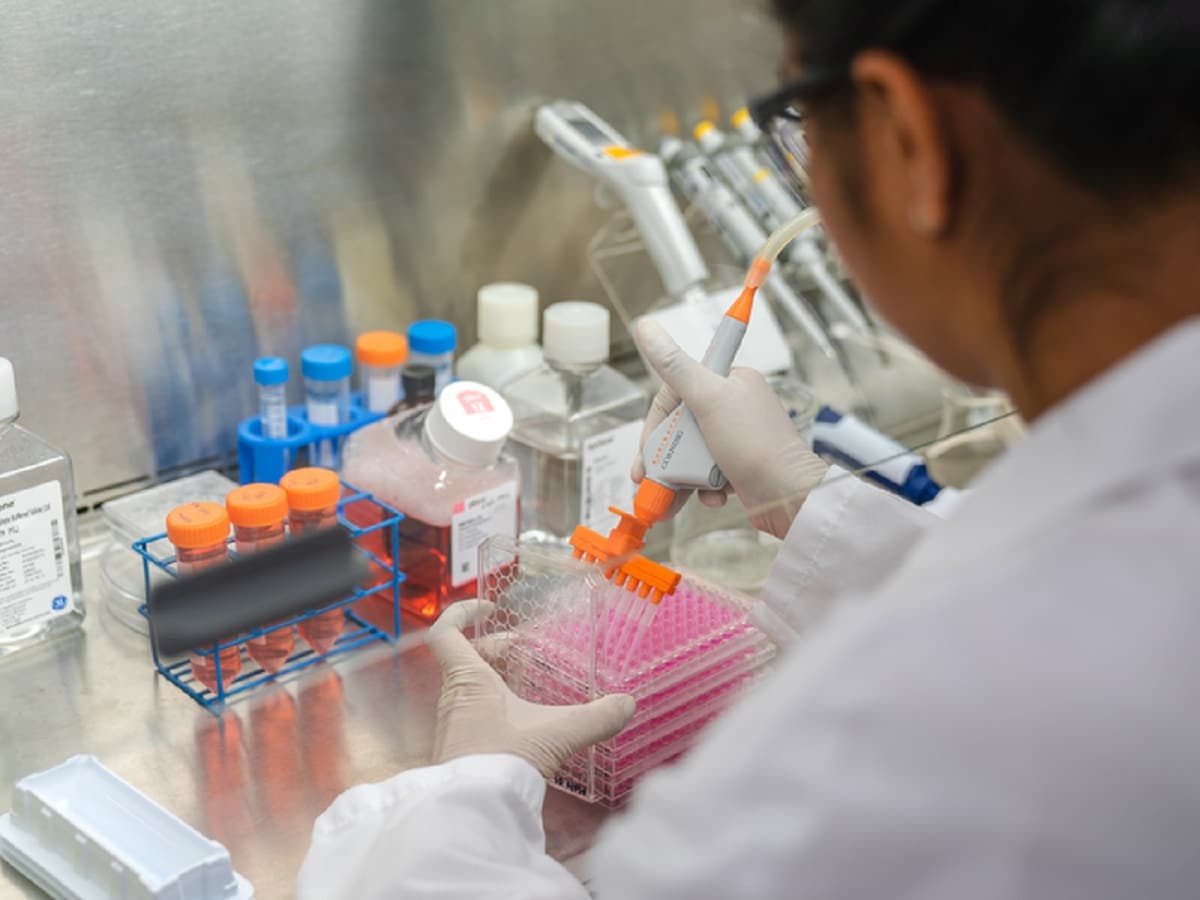To find the most promising biotech investments, it’s critical to start with an edge…
Stansberry Venture Technology editor Dave Lashmet has spent more than two decades parsing the data to identify small-cap biotech stocks with big upside potential. And he knows that by focusing on a handful of common-sense medical and investment metrics, you can more easily tell the winners from the losers… and get in before Big Pharma catches on.
In today’s article, Dave reveals one of the best sources of information on biotech companies… details the top three criteria he uses when recommending an investment… and explains how to predict future winners based on rigorous clinical trial results…
— RECOMMENDED —

A disease that affects more people than diabetes, kidney disease, and HIV/AIDS combined with NO viable treatments… until now. This could be the biggest medical breakthrough of our lifetimes. And the drug that kicks off the frenzy was just approved. One man knows how to play the situation four ways (including three 10-bagger calls)… and… he’s giving away a pick on camera, right here.
How to Predict Which Biotech Stocks Could Soar 100% or More
This is the biggest mistake you may be making…
If you don’t invest in medicine… biotechnology… or drugmakers… you’re missing out on a massive part of the economy. Health care spending makes up more than one-sixth of the entire U.S. gross domestic product.
Many investors “buy biotech” by investing in one or two blue-chip Big Pharma companies like Pfizer (PFE). Or perhaps they buy an exchange-traded fund, like the iShares Nasdaq Biotechnology Fund (IBB), which holds a basket of more than 275 biotech and specialty pharma companies.
Both choices can be incredibly profitable. As my colleague Steve Sjuggerud says, “If you catch just one biotech bull market in your lifetime, you may never have to work again.”
But what if instead of buying the current large-cap winners or a full index, you could simply buy the future winners?
By that, I mean the most promising 1% of small-cap biotechs – the few contenders with the potential to soar 100%… 200%… even 500%.
Predicting this probably sounds impossible. But more than any other sector, biotech companies show off their future products. That means we can get a glimpse of which companies have the best prospects.
Legally, they have to do this. Prospective drugs and medical devices are tested in clinical trials. And for more than a decade, all the new trials that are starting have been collected in one place, thanks to the U.S. Food and Drug Administration (“FDA”).
This clearinghouse of information for patients and investors is all hosted online, for free, at clinicaltrials.gov. You can search drugs, conditions, devices, and some 380,000 studies.
Of course, making sense of this flood of information isn’t easy. And the trials aren’t cheap.
That’s why today, more than half of new drugs were not invented by the Big Pharma companies that now sell them…
Bean counters at Big Pharma got tired of paying the research costs for so many clinical-trial failures. Instead, the new business model is to let investors take the risk… then Big Pharma steps in to buy the successes.
Fortunately, this means picking the right small firms can lead to huge gains when the takeover happens.
Most small firms have no sales force, and Big Pharma companies have thousands of field reps. So there’s a virtuous economic payoff when the big companies and smaller firms get together.
The hard part is finding the successes before the Big Pharma sharks can beat us to them. That’s what we specialize in at Stansberry Venture Technology. We use three drug guidelines when recommending a company…
- Minimal side effects. We figure that as long as they’re safe, the drugs we back could still be supplemental drugs even if a better treatment is developed in the future.
- Strong positive effects. By that, I simply mean that the drug works and does what doctors need it to do.
- Huge market potential. We like to see treatments that can help hundreds of thousands of people per year, if not millions.
Plus – and this is important – we focus on early-stage clinical trials. These are Phase I and Phase II trials, when researchers have moved past animal testing into treating people with the diseases.
That’s our edge – our informational advantage. We don’t have to wait for the final answer, usually found in Phase III trials… We predict it.
— RECOMMENDED —
Over the first 180 issues, Luke Lango delivered an 86% success rate… 82 different stocks that have gone up as high as 100% or more… and four gains as high as 1,000% or more. Today, he’s spilling every last detail.
Let me give you a real-world example of successful Phase III clinical data – the Kisqali cancer pill from drug giant Novartis (NVS). Long before this new drug was for sale, it was tested in breast-cancer patients. Here’s the first look at the Phase III data from back then…
- Of the 670 patients in the trial, half got chemotherapy and a placebo, while the other half got chemo plus Kisqali.
- The group that got chemo and Kisqali had, on average, 23.8 months of progression-free survival – no hint of cancer for almost two years.
- The group that got chemo and a placebo had progression-free survival of 13 months – just over a year. So the absolute difference was 11 months in favor of Kisqali.
In the latest update on this trial, 70% of people treated with Kisqali were still alive three and a half years later, versus less than half (46%) of those who did not get Kisqali. So this drug offers a clear survival advantage.
This, of course, is the ultimate goal of any cancer treatment. So as well as being a promising sign for new patients, this new data should boost sales.
Now, even Phase III results come before FDA approval… that is, before any sales are possible. They run at a negative return on investment – no revenue and no profits. In accounting terms, it’s still a loss. These are invisible assets for a firm.
Big Pharma firms don’t usually wait for Phase III trial data to buy up drug candidates, though. That gets expensive – particularly in parsing out sales royalties, which after Phase III trials can be a 50-50 split.
At the Phase II stage, there is a more reasonable 80-20 split – Big Pharma likes that. But Big Pharma can also sweeten the deal for its smaller counterparts… namely, by doling out “milestone payments” that can climb up to $1 billion over time.
For a small-cap company, a deal can be a huge booster – one that early investors share.
That’s why if we see stellar results early on, it’s possible to predict where the later winners will be… and get in on their successes.
In this case, Novartis has Kisqali on the path to becoming a blockbuster drug, with sales hitting $195 million per quarter by the start of 2021. And revenue for the drug is up 19% compared with last year – despite all the hospitals being closed because of COVID-19!
But again, Novartis is a Big Pharma company. So for Novartis’ investors, the numbers aren’t as exceptional yet…
Novartis is a behemoth with a $220 billion market cap. Shares have gone up 39% in the two and a half years since Kisqali won FDA approval. But the S&P 500 Index also went up 33% over that time frame. So this major leap forward in cancer treatment barely allowed Novartis to outpace the benchmark index.
But imagine if Kisqali were owned by a small, one-drug company, with these same promising trial results… If that tiny company were able to make a deal for its drug, it could absolutely soar in value.
That’s why we focus on small-cap companies in Stansberry Venture Technology, where successful trial results and eventual approval can mean gains of 100% or more.
It’s no coincidence that we bring up Kisqali. One drug we are tracking in my Stansberry Venture Technology newsletter works when Kisqali fails…
This experimental drug is currently in its final pivotal trials, including over 450 patient volunteers, with the trial expected to conclude in August 2021. In other words, it’s only two months away from completion… and four months until we see the outcome data.
Here’s why this matters for investors…
Breast cancer is the most common cancer. We see nearly 270,000 new patients per year in the U.S. – and 75% can take Kisqali for the kind of cancer they have. For many of them, this will be a lifesaving treatment. But roughly 100,000 people will need a second-chance drug.
That’s where the drug we’re tracking comes in. Fortunately, about one in four people who progress on Kisqali are responding to this new safety net.
Again, that’s based on early trial data. This still needs to be confirmed. But the small company behind this second-chance drug has now started pivotal Phase III trials, with the FDA’s consent.
How long will Big Pharma firms wait before the company licenses this drug? Will they wait for these trials to finish to get in a bidding war? Probably not…
Already, patients who otherwise would be dead are alive today because of this promising new compound. And that also means that if a deal happens, early investors are in for a huge payout.
That’s how we find the biotech firms with the biggest upside – using positive early trial results to find the top 1% of small stocks.
Editor’s note: Dave has used his knowledge of the biotech sector to help lead Stansberry Venture Technology subscribers to gains as high as 691%… 777%… and even 1,139% in the past year alone. And now, he has identified a handful of opportunities with tremendous upside potential…
In short, Dave says a recent FDA announcement could send the stocks of three small-cap companies skyrocketing… and those who get in on the ground floor could earn gains as high as 1,000% on each of them. It has to do with a disease that 42% of Americans suffer from, with no cure – until recently.
Dave is revealing all the critical details in a special presentation for a limited time only. Click here to watch it now.


